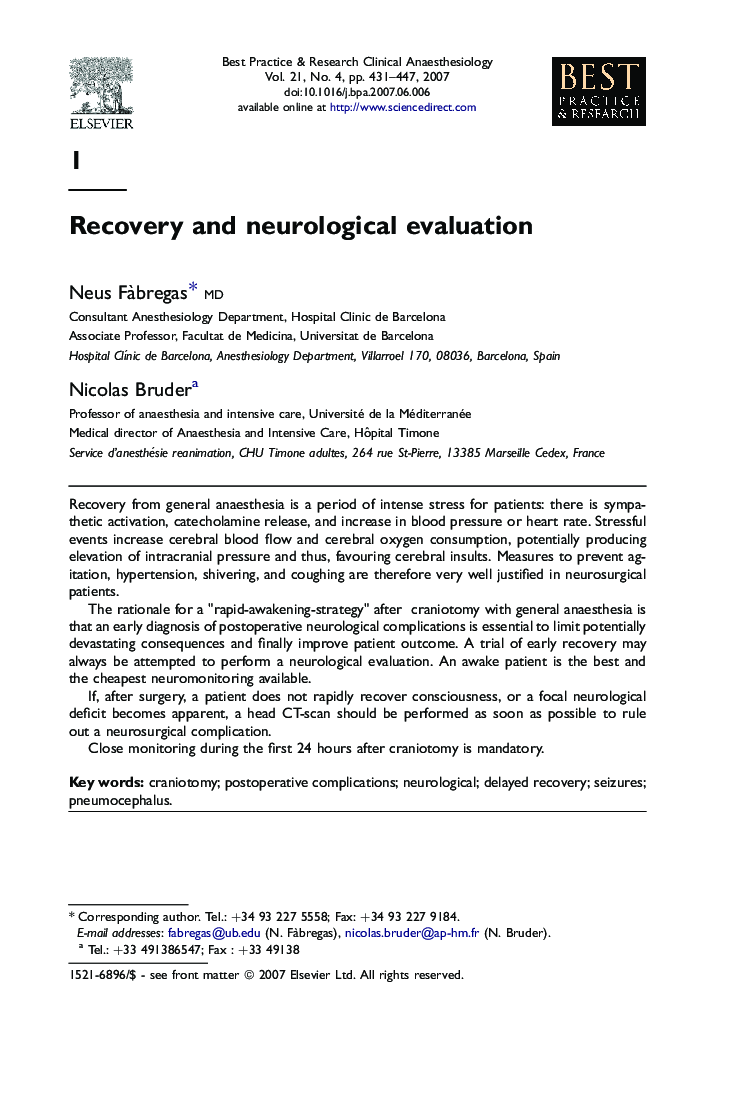| Article ID | Journal | Published Year | Pages | File Type |
|---|---|---|---|---|
| 2748698 | Best Practice & Research Clinical Anaesthesiology | 2007 | 17 Pages |
Recovery from general anaesthesia is a period of intense stress for patients: there is sympathetic activation, catecholamine release, and increase in blood pressure or heart rate. Stressful events increase cerebral blood flow and cerebral oxygen consumption, potentially producing elevation of intracranial pressure and thus, favouring cerebral insults. Measures to prevent agitation, hypertension, shivering, and coughing are therefore very well justified in neurosurgical patients.The rationale for a "rapid-awakening-strategy" after craniotomy with general anaesthesia is that an early diagnosis of postoperative neurological complications is essential to limit potentially devastating consequences and finally improve patient outcome. A trial of early recovery may always be attempted to perform a neurological evaluation. An awake patient is the best and the cheapest neuromonitoring available.If, after surgery, a patient does not rapidly recover consciousness, or a focal neurological deficit becomes apparent, a head CT-scan should be performed as soon as possible to rule out a neurosurgical complication.Close monitoring during the first 24 hours after craniotomy is mandatory.
